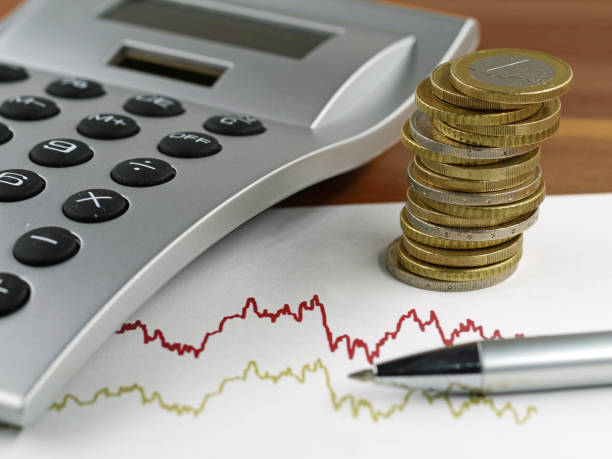Australians who engage in the buying, selling, or swapping of cryptocurrencies or NFTs should be aware that doing so is likely to incur taxes. Specifically, most investors will need to pay capital gains tax, a kind of tax typically applied to the trading of stocks and shares or property. You may also need to pay income tax.
In this article, we’ll discuss the reasons we owe tax on crypto investments and what kind of tax responsibilities you are likely to have. We will also refer to a crypto tax calculator that makes keeping track of your taxes a lot easier.
Crypto investors vs professional traders
The Australian Taxation Office (ATO) classifies crypto investments as property. This means that rather than a currency as the name denotes, cryptocurrency is a digital asset according to Australian law and as such is taxed using capital gains rules.
This means that when non-professional investors sell, trade, or otherwise dispose of their crypto the profit or loss made needs to be reported on their tax return.
For example, if Bernard bought 1 ETH in 2017 for $200 and then sold it for $2000 in 2021, his capital gain would be $1800.
If you buy and sell crypto regularly as part of your regular income, however, you are seen as a professional trader in the eyes of the ATO. You will know if you are a trader if you are conducting trading in a business-like way, with a commercial name and record-keeping. Other factors such as the volume of trades you conduct and shorter-term profit seeking are also seen as relevant.
How CGT works
In both cases, investors and professional traders both have the tax they owe on their crypto profit and losses calculated according to their income tax bracket. Investors pay a percentage of their gains, professional traders pay according to their income tax rate.
Importantly, unlike in some other countries, capital gains tax is not a separate tax but the capital gain is, instead, simply added to your income and is then subject to the same percentage rate as your salary, for example.
This means a capital gain simply increases the amount of tax owed. A capital loss offsets other capital gains and the tax owed.
A key difference between the treatment of investors and professional traders is that investors have access to a 50% discount on their capital gains tax if they have held the asset disposed of longer than 12 months.
The ATO classes the “disposing” of a crypto asset as anytime you relinquish the holding of that asset. This involves:
- Selling crypto for fiat currency
- Trading one crypto token for another
- Spending crypto
- Giving crypto away
- Paying blockchain gas fees
Calculating CGT Tax Rate
Whenever you dispose of an asset as an investor, you need to make a record of the profit or loss you made based on the original purchase price. This original purchase price is called the cost basis and is important in calculating the amount of tax you owe on your profits.
To calculate your capital gain or loss you can use the following formula:
Capital gains = (sale value – acquisition value (cost basis))
With your capital gain calculated, you can then use the following table (tax year 2021-2022) to discover how much tax you owe.
| Taxable income | Tax payable | Effective CGT Rate |
| 0 – $18,200 | Nil | N/A |
| $18,201 – $45,000 | 19 cents for each $1 over $18,200 | 19% |
| $45,001 – $120,000 | $5,092 plus 32.5 cents for each $1 over $45,000 | 32.5% |
| $120,001 – $180,000 | $29,467 plus 37 cents for each $1 over $120,000 | 37% |
| $180,001 and over | $51,667 plus 45 cents for each $1 over $180,000 | 45% |
For example, if Bernard earn between $120,001-$180,000 and is not a professional crypto trader, then his $1800 capital gain is subject to a 37% tax. However, because Bernard held his 1 ETH token for several years, this is reduced by 50%:
Capital gain = ($2000 – $200)
Capital gains tax = (($1800 x 0.37) ÷ 2)
Bernard, therefore, owes $333 AUD in capital gains tax based on the disposal of his ETH,
Using a crypto tax calculator
While we can use the above formulations to figure out what we owe in terms of crypto tax, it is far easier to use an Australian crypto tax calculator, especially if performing a lot of calculations.
Swyftx has a crypto tax calculator that can be used to estimate accurately the amount of capital gains tax you need to pay on the disposal of your crypto assets.
In order to use the crypto tax calculator properly you will need to know the following:
Sold price: This is simply the value of your asset in AUD upon disposal (selling, trading, gifting etc.)
Cost basis: The cost basis is the price you originally paid for the asset in AUD. If you received the asset as a gift or from a trade, it is then the value upon receipt in AUD.
Taxable income: For most investors, this will be your total salary and other income you earned during that tax year. This is used to determine which rate of CGT to apply.
Ownership duration: This is asked because if you hold an asset for more than 12 months, you receive a 50% discount on the tax applied.
After entering all of the above information correctly, clicking calculate will display the amount of tax owed. If you are unsure of the result, the ATO has their own record-keeping tool that can be used to double check against.
Does the ATO monitor crypto activity?
While your average investor is not being actively monitored, the ATO does have the power to monitor crypto activity on designated service providers.
The ATO does have data matching software that helps it spot tax fraud and avoidance with data going back as far as 2014. Alongside the customer verification processes known as “know your customer” checks (KYC), the ATO has the ability to identify individuals that have neglected to pay their crypto taxes.
Takeaway
Paying tax on your crypto can be daunting at first but understanding how the figure is arrived at and by using a crypto tax calculator, a lot of the hassle is taken away. While it can be disappointing for unaware investors to see some of their profits lost to taxes, it is important to meet these tax obligations with accurate information.





